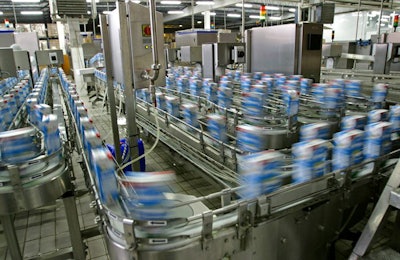
Transparency in the pet food industry means many things to consumers. For some, it goes hand-in-hand with traceability. For others, a cleaner, simpler label speaks to the idea of being forthright about ingredients and intentions. For still others, transparency is all about the marketing matching the reality. Whatever the angle, it seems that trust is the key — trust between consumer and manufacturer, and the knowledge that a pet owner can believe what they see on store shelves.
But what does all that really mean in practice? Meaningful communication with consumers has been a significant talking point in the industry for years, and the complexity of what consumers want versus what the industry can give is ever-changing. How can pet food get transparency right?
Challenges at all steps of the process
From the ingredients to the final product, there are plenty of opportunities for transparency in pet food — and plenty of room for missteps.
“In my opinion, the transparency quest for us pet food producers is somehow coming to a deadlock when it comes to product declarations,” said Henriette Bylling, CEO and owner of Aller Petfood Group A/S. “We are having to meet the requirements for both FEDIAF/AAFCO (the European Pet Food Industry Federation/Association of American Feed Control Officials) and the local authorities in individual countries. However, when domestic pet food meets imported pet food in the same geographic market, and the declarations and marketing claims are adapted to different standards, it is fully understandable that the consumer becomes confused and does not know what to believe.
“In theory the local authorities should ensure that there is a match, but this is not what I see in the market,” said Bylling. “In an ideal world it would be perfect if the requirements could be increasingly synchronized, but this would require extensive work from the industry that we all have to be ready to take on.”
What’s on the pet food or treat bag is the most obvious vehicle for industry transparency, but it can create confusion as often as not.
“There is a strong global trend in the pet food industry toward a simpler/clean label,” said Rikke Sakstrup Frandsen, industry business manager, natural colors division, for Chr. Hansen. “There is a wish to claim ‘preservative free’, ‘no artificial flavors or colors added’ or even ‘natural’.”
But getting to the point where those claims can be made can itself be a struggle between what the consumers want and what the industry can reliably provide…and how to truthfully convey the result.
“It is a challenge to balance ‘natural’ with a satisfactory shelf life — without preservatives, a product doesn’t last as long — but here one should differentiate between more natural preservatives and those that are based on chemicals,” said Frandsen. “Picture a bunch of flowers freshly picked from a field and put in a vase with just water. It doesn’t get more natural than this, straight from nature and no chemicals added. But without preservatives, durability is limited to three–six days. Is that okay? Hardly.”
Sometimes part of the issue is determining who should convey the information customers want as much as how.
“We do supply information to our clients when asked or as part of an ongoing agreement with them, but we leave it up to our clients to educate inquiring consumers,” said Steve Mills, senior vice president of customer brand and co-manufacturing sales for private label pet food manufacturer American Nutrition.
Of course, in order to do that, everyone involved still needs the correct information, and that is a process, as well.
“We have customers who desire more transparency into ingredient sourcing and quality,” said Mills. “When working with a customer with this desire, our ingredient sourcing and quality teams will work with them attempting to meet their requirements. American Nutrition has a robust vendor audit program, and many of our customers will also audit our vendors. We also have customers who select certain vendors and ingredients for exclusive use in their formulas.”
Solutions: communication and technology lead the way
As the pet food industry continues to navigate the waters of transparency needs, two paths seem to intertwine on the road to success — communication and technology.
“For me it is paramount that we are always ready to have a dialog and share information,” said Bylling. “Even on social media in ‘troll’ cases it is important to ‘kill people with kindness’…and information.”
NiceLabel, a global developer of label design software and label management systems for multiple industries including pet food, has seen a significant shift in the technologies wanted and used to assist in furthering transparency.

Labels are very visible components of transparency, and technology is paving the way to make those components more streamlined and easier to execute. | Courtesy NiceLabel
“From a transparency point of view, we’re trying to make information clearer in the market, and really trying to use new technology such as web [based applications] and the Cloud to centralize so you have accurate, consistent information,” said Ken Moir, vice president of marketing for NiceLabel. “What we are seeing is a digital transformation of the supply chain. In the future we’ll see that the next big thing will be IoT (Internet of Things) Cloud-connected printers. Basically, nobody will have anything to touch. It’s all about reducing the IT part, taking IT out of it, and simplification.”
The more centralized and simplified things are, according to Moir, the easier it will be to convey transparency throughout the manufacturing process — as an added benefit, the process itself will become more efficient.
“Obviously you need to have quality control, but we do it manually [right now],” he said. “When you digitize it, you can take people out. When you take people out, you take cost and risk out. When you take risk out you take error out. When you take error out you don’t need to quarantine product. And when you don’t need to quarantine product you can ship it faster.”
And of course, the more customers demand transparency at every point of the pet food production process, the more the industry will have to step up to make things right.
“We believe the need for transparency will continue to grow, putting pressure on brands and manufacturers to provide more and more detailed information concerning ingredients and the manufacturing process,” said Mills. “This pressure will help to raise the bar on ingredient quality across all suppliers and manufacturers, ensuring all are purchasing and using quality ingredients from top-notch vendors around the world.”
Industry focus: the Champion Transparency Council
Champion Petfoods has gone “all in” on transparency with the formation of a Transparency Council. Get a look inside the Council and hear from both consumer and veterinarian members on what they think of the idea (and the practice).


















